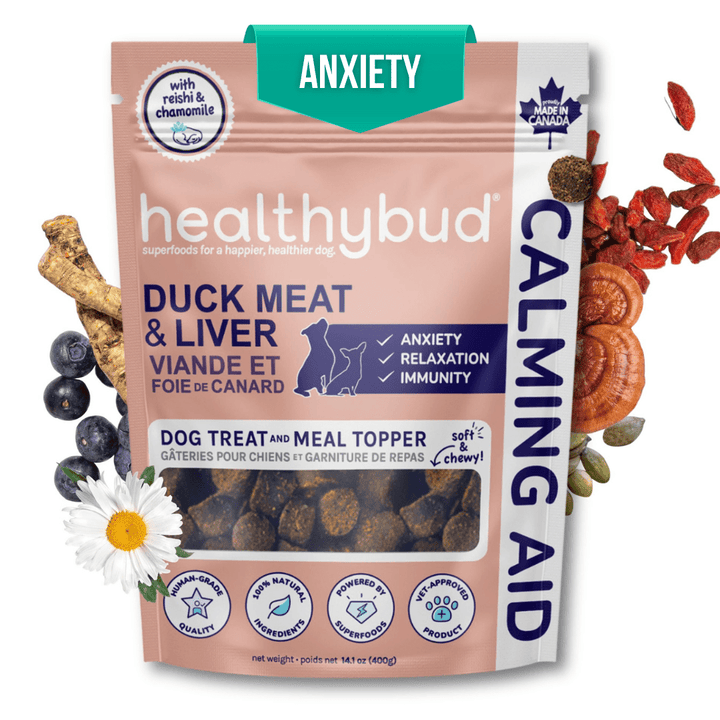Table of Contents
Summary ✍️
Pet insurance is growing in popularity as more pet parents want to be financially prepared for unexpected vet visits. But is it really worth the monthly premium? This blog breaks down pet insurance pros and cons, explains what it typically covers, and offers tips to help you decide if it’s right for your furry family member.
Key Takeaways 🔑
Pet insurance can help ease the financial burden during emergencies and provide peace of mind.
Some policies cover holistic and preventive care, beyond just accidents and illness.
Costs vary widely depending on your pet’s breed, age, and the level of coverage you choose.
Pet insurance isn’t one-size-fits-all — some pet parents might be better off building a dedicated emergency savings fund.
Always read the fine print and compare policies carefully before committing.
Feeding your pup balanced, vet-approved, hypoallergenic meals (Hello, Healthybud Lamb & Salmon Meal Patties!) can complement treatments covered by insurance—helping support recovery and everyday vitality.
[SHOPIFY: Lamb & Salmon Meal Patties]
Pet Insurance Pros and Cons: Is It Worth It? 🚑
If you’ve ever rushed your pup to the emergency room at 2 a.m. then you’ve probably also thought about whether to get pet insurance.
No one wants to imagine their furry BFF getting sick or getting hurt, but the reality is that life happens… dogs eat things they shouldn’t, cut themselves on sharp objects and catch infections (poor babies). Sometimes, like humans, there’s no rhyme or reason to why they’re ill—maybe just genetics or bad luck. Yikes!
And just when you thought taking your sick pet to the vet or animal hospital was bad enough… the bill comes. Double yikes!
According to The Zebra, a routine trip to the vet for dogs in the U.S. averages $50 to $250 while emergency surgeries cost an average of $1,500 to $5,000.
That’s where pet insurance comes in.
But deciding if you should get pet insurance isn’t so simple. The insurance itself can be pricey so it’s hard to know which option is best for a budget. And you always have to read the fine print since, oftentimes, insurance providers don’t include what you might expect… so, is it really worth it?
At the end of the day, deciding whether or not to get pet insurance is as personal as deciding what to feed your pet so it’s really up to you, as pet parents, to do what’s right for you and your fur baby. We hope our pet insurance pros and cons list can help you figure that out!
Pros of Pet Insurance ✅
1) Makes Payments Easier to Manage
Some of you may feel confident you’ll have enough cash lying around if a pet emergency pops up, but the rest of you may want to break up large amounts into smaller monthly payments. That’s kind of what you’re doing by paying your insurance premium! Taking care of possible vet expenses in advance means that, if the time comes, the payment aspect should be relatively smooth sailing. Some insurance companies also pay their portion directly to the vet so you won’t need to deal with coordinating or getting reimbursed.
2) Gives You Peace of Mind
You’ll never have to worry about how you’re going to afford pet care if you opt for insurance. And while you could always save money on your own, insurance guarantees that you won’t accidentally spend those savings on a leaky roof or last-minute anniversary present. Being a pet parent is stressful. While not every illness and injury is covered, some pet insurance policies reimburse up to 90% of costs—and hopefully that’s enough to help you chill out a little more than usual.
Duck Calming Aid

$16.00 CAD
Help soothe stress, anxiety & nervous energy—naturally. These soft, functional chews are packed with Reishi, Ashwagandha & Chamomile to help your pup stay calm naturally (without CBD!)… read more
3) Covers Holistic and Preventive Care Options
Not all insurance is just for accidents and illnesses. Some policies include coverage for alternative treatments such as acupuncture, physical therapy, prescription diets, and behavioural therapy. These options can improve your pet’s quality of life, especially for chronic issues or conditions that benefit from complementary care. Covering preventive care—like vaccines, dental cleanings, and flea prevention—with wellness add-ons can also encourage routine vet visits to catch problems early.
4) Supports Pets with Chronic or Hereditary Conditions
While coverage can vary, many pet insurance plans help manage long-term conditions like arthritis, allergies, or diabetes. This can make ongoing treatments more affordable over your pet’s lifetime. Early adoption of insurance, ideally when pets are young and healthy, can ensure better coverage for hereditary issues common in certain breeds, reducing your financial risk as your pet ages.
5) Flexible Plans to Fit Your Budget and Needs
Pet insurance isn’t one-size-fits-all. You can usually choose your deductible, reimbursement percentage, and annual limits, allowing you to tailor a plan that fits your finances and concerns. Whether you want comprehensive coverage or just accident protection, there’s likely an option that suits your pet’s lifestyle and your budget.
Cons of Pet Insurance 🚩
1) You Might Pay More Than You Use
It’s definitely possible that you’ll pay more in insurance than you ever get back for medical expenses. Getting insurance is a bit like gambling but you’re placing bets on your dog’s health, which is unpredictable. You should also keep in mind that premiums may be higher for older pets and certain breeds that are more likely to have health problems so expect to fork out more money than some other dog owners under those conditions.
2) Claims May Be Denied
Your insurance policy may not cover your pet’s issue(s)—especially if your pet has pre-existing conditions. This could cause you to feel a false sense of security and make your premium payments feel like a waste. Not all vet bills qualify for reimbursement. Pre-existing conditions—health issues your pet had before getting insured—are usually excluded. Additionally, some policies have waiting periods before coverage begins, so injuries or illnesses during that time may not be covered. Administrative errors, missing documentation, or misunderstandings of coverage terms can also lead to denied claims. It’s essential to read the fine print carefully and understand what your policy does and doesn’t cover.
3) Coverage May Exclude Routine Care Without Add-Ons
Basic policies often don’t cover routine wellness visits, vaccinations, flea prevention, or dental cleanings unless you purchase additional wellness or preventive care riders. These add-ons increase your monthly premium, which might make the insurance less affordable for some pet parents. If routine care is a priority, you’ll need to factor these costs into your budget.
4) Alternatives Might Suit Some Pet Owners Better
Instead of paying monthly premiums, some pet parents prefer to self-insure by setting aside savings each month dedicated solely to potential pet emergencies. This approach gives you full control over the money and avoids paying for unused insurance. However, it requires discipline and the ability to cover potentially large unexpected costs upfront, which might not be feasible for everyone.
5) Premiums and Coverage Can Vary Widely
The pet insurance market can be confusing with many providers, plan types, and pricing structures. Premiums depend on factors like your pet’s age, breed, location, and the coverage level chosen. Sometimes a cheaper policy means limited coverage, higher deductibles, or lower reimbursement rates. Comparing plans thoroughly can be time-consuming but is necessary to avoid surprises later.
Expert Advice: Shopping Around 🛍️
If you choose to get pet insurance, we suggest shopping around to find the best price and reading the fine print of your pet’s policy. Remember that your insurance provider should let you use whatever vet you want.
You might want to get pet insurance for only a portion of your dog’s life like when they are a puppy or a senior… or during a time when premiums are lower, such as when your pet is young.
Prices vary depending on breed, age, where you live and the type of coverage you choose!
Here are some interesting stats about pet insurance in Canada, according to an article by Dogster:
The global pet insurance market is expected to surpass $10.2 billion by 2025.
The average annual cost of dog insurance is $570.
The maximum yearly limit for many pet insurance firms in Canada is $10,000.
Around 3% of pet owners in Canada have a pet insurance plan.
In Canada, pet insurance covers a wider variety of treatments. It’s more expensive than in the US.
Most insurers in Canada do not allow pet owners to make claims for pre-existing conditions.
To ensure that your pet insurance claim is paid, it should be filed within two months of any injuries or illnesses your pet has incurred.
Between 10% and 20% of all cats in Canada die from feline upper respiratory infections. It’s often preventable if you have pet insurance coverage.
The most expensive breeds to insure in Canada are Dogue de Bordeaux and Great Dane. Others include Greater Swiss Mountain Dog, Bullmastiff, and Newfoundland.
6% of dog owners and 2% of cat owners wait until their pets are sick before buying insurance for them.
Rover.com says the average cost of owning a dog in Canada in 2023 ranged from $460 to $3,140. From the moment you bring them home, your dog’s lifetime care can range from $17,343 for a small breed to $53,935 for a large breed.
FAQs: Pet Insurance Pros and Cons 💡
Q: When is the best time to get pet insurance?
A: Ideally, get coverage when your pet is young and healthy. This helps keep premiums low and reduces the chance of pre-existing condition exclusions.
Q: Does pet insurance cover routine check-ups and vaccinations?
A: Most basic policies do not, but some offer optional wellness add-ons that cover preventive care like vaccines, dental cleanings, and flea prevention.
Q: Can I use any veterinarian?
A: Most pet insurance policies allow you to use any licensed vet or specialist, but always check your plan’s terms to be sure.
Q: How do I decide between pet insurance and saving money myself?
A: It depends on your financial comfort zone. Insurance spreads risk and cost over time, while saving requires discipline and financial readiness to cover big bills upfront.
Conclusion 💸
Pet insurance can be a valuable tool for many pet parents, offering financial relief and peace of mind in emergencies. However, it’s not for everyone. Some pet owners prefer to self-insure by saving money each month.
Before committing, carefully compare policies, read all the fine print, and consider your pet’s breed, age, and health history. The best choice is the one that fits your budget and lifestyle so you can focus on what really matters: spending joyful, healthy years with your dog.
And remember: the best insurance plan starts with prevention—through a variety of real, nutritious food and treats that support your dog’s health every day.
Healthybud Sample Kit

$35.00 CAD
$45.00 CAD
New to Healthybud? Try our best-sellers in one easy bundle. The Sample Starter Kit includes 7 mini packs of our top products—perfect for testing what your dog loves most.… read more
🚨 Special Promo Alert!
As a thank you for reading our blog, enjoy a 15% discount on all Healthybud products! Use code BLOG15 at checkout.






